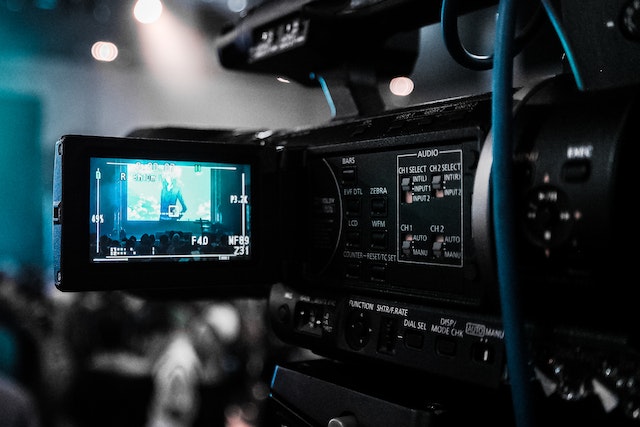Ever wonder how technology has changed the film industry? From the earliest days of sequential photography to the introduction of technicolor, the intersection of tech and film innovation has propelled the film industry forward.
And why stop now?
In this blog, I’m going to take you on a quick tour of the future of filmmaking technology. I’ll be pointing out new film technology to keep an eye on and explore how the latest could change the face of filmmaking.
Let’s dive right in.
Algorithmic Video Editing
While most new technology in the industry is disruptive by nature, the future of post-producing is linked to the past. Like many advances in film editing technology before it, algorithmic editing is a marriage between modern science and historic principles.
At its core, algorithmic editing refers to the process of editing according to a set of well-defined rules. Think of it like cutting your movie using math, not entirely unlike the practice pursued by Sergei Eisenstein back in 1925. Though most movies forgo formal rigidity, you would be hard-pressed to find a modern film that doesn’t incorporate at least a few of its editing principles.
In other words, you can find elements of algorithmic editing that are already being used in post-production.
However, film innovations in computer coding are fundamentally changing the game. Due to the increasingly digital nature of film technology, computer programming languages are becoming increasingly integrated into the future of filmmaking technology. If computer programs are essentially complex sets of simple instructions, their applications in editing are virtually endless.
Algorithmic video editing is used to automatically cut footage to match a specific style. It can be used to organize the mountain of materials shot during documentary production by utilizing visual identifiers, such as faces or landscapes. In some cases, it can even be used to change the dialogue spoken by an actor after it’s been recorded.
3D Printing
The adaptation of 3D printing for movies is proof that new technology in the film industry rarely gets its start in the film industry. Previously a ream of science fiction, 3D printing started its journey back in the 80s as a potential manufacturing and prototyping solution. Today, we use technology to print everything from action figures and even organ tissues. A relatively new technology in the film industry, 3D printing is being leveraged to push the limits of costume design, prop building, and much more. This new tech’s intense level of detail would otherwise require countless hours of human labour in order to be replicated by hand. As well, 3 printing allows these objects to be altered and iterated with relatively little effort.
3D Previsualization
If 3D printing is a means of transforming digital ideas into tangible objects, the new film technology of 3D previsualization is quite the opposite. 3D previsualization (or pre-viz) revolutionizes the pre-production process by conjuring a fully immersive, digital replica of physical sets or locations that can be used on a live-action production long before actual cameras start rolling.
The digital platforms of pre-viz give filmmakers the time and ability to explore and experiment on their own clock without having to incur unnecessary expenses. Through the technology of 3D pre-viz, directors can better refine visual designs, production designers can increase construction precision, directors of photography can remove the guesswork of technical solutions, and producers can optimize the logistical flow of entire productions.
Previously, 3D pre-visualization methods were notably costly and cumbersome, leading to a serious limitation of their use in the film technology entertainment industry circles, only being accessible to those with the highest budget. Now, pre-visualization is more accessible than ever.
